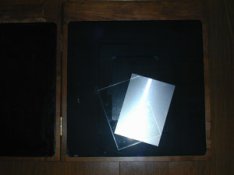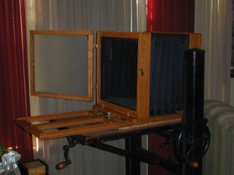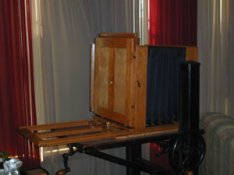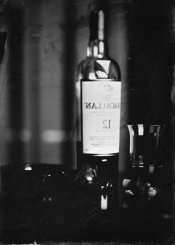Well it seems I'm on my way back to analog. I had sold my LF equipment and have been all digital for awhile now. However, I check the APUG gallery daily because it is some of the finest photography I can find on the web. I could start listing names but it would make the post long and off topic 
Anyway, I've been lured back by some of the recent tintypes (namely prifti's work). I've also long admired Keriks work but for some reason never thought to try wet plate myself. I even saw some beautiful plates Kendrick made of his cowboys when his show was here in town.
I have been doing quite a bit of research online with what it takes to make wet plate postitives. I'm definitely intrigued and want to pursue this adventure. However, I have to buy some equipment again.....
I'm trying to get on Quinn's forum but I guess he's out of reach right now. I would like to ask a few questions to those of you involved in this process.
1) Why use glass over aluminum for positives (or vice versa)?
Where do you buy the glass or aluminum?
2)In prifti's recent portraits I noticed an array of tones. I am definitely more interested in the warmer tones. How is toning applied?
3)I have searched the forums and found some useful information but not exactly where to buy the chemicals. I did see links for the collodion, but not the rest. So does anyone have links? Do you make all the chemicals yourself (including the collodion)?
I have many more questions but I'll leave it at that for now. Perhaps, I'll let this thread perpetuate as the questions arise and I begin the process.
Thanks for any help
Scott

Anyway, I've been lured back by some of the recent tintypes (namely prifti's work). I've also long admired Keriks work but for some reason never thought to try wet plate myself. I even saw some beautiful plates Kendrick made of his cowboys when his show was here in town.
I have been doing quite a bit of research online with what it takes to make wet plate postitives. I'm definitely intrigued and want to pursue this adventure. However, I have to buy some equipment again.....

I'm trying to get on Quinn's forum but I guess he's out of reach right now. I would like to ask a few questions to those of you involved in this process.
1) Why use glass over aluminum for positives (or vice versa)?
Where do you buy the glass or aluminum?
2)In prifti's recent portraits I noticed an array of tones. I am definitely more interested in the warmer tones. How is toning applied?
3)I have searched the forums and found some useful information but not exactly where to buy the chemicals. I did see links for the collodion, but not the rest. So does anyone have links? Do you make all the chemicals yourself (including the collodion)?
I have many more questions but I'll leave it at that for now. Perhaps, I'll let this thread perpetuate as the questions arise and I begin the process.
Thanks for any help
Scott











